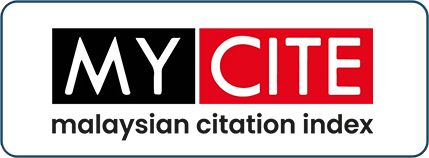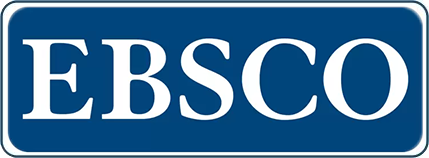Conceptual Framework Of A Unified Legal Control Of Halal Meat Import For A Sustainable Halal Industry In Malaysia
DOI:
https://doi.org/10.33102/jfatwa.vol27no2-SE.485Keywords:
Halal, Imported Halal Meat, Malaysia, Sustainability, Unified Legal ControlAbstract
The recent discoveries of smuggling non-halal meat within the halal meat industry have impeached the reliability of the existing legal framework governing the import of halal meat to Malaysia. The existing halal legal framework that is scattered and non-unified contributed to the uncertain jurisdiction of multi-authority that controls the import of halal meat, lack of coherence, over-regulation, and inadequate regulatory activities. Thus this study aimed to examine the conceptual framework of unified legal control of halal meat import in Malaysia. This study adopts a qualitative method utilizing doctrinal research where data is gathered using documentation methods from books, journal articles, reports, and online data-based. The data gathered are analyzed using a document and content analysis approach. The finding shows that a more effective unified legal framework should replace the current scattered and non-unified legal framework. The unified legal framework may assist in identifying the role of each agency to avoid duplication of effort, consolidation of resources, and finding measures that help improve coherence among these agencies.
Downloads
References
Al Mu’in Al Mubin. (2006). Translated by Syarif Zaini Daud. Kuala Lumpur: Al Risalah Product Sdn.Bhd.
Akmal, H. (2020). For 40 Years, A Meat Cartel Has Been Selling Fake Halal Beef Mixed With Horse & Kangaroo Meats in Malaysia. The Rakyat post. https://www.therakyatpost.com/2020/12/22/for-40-years-a-meat-cartel-has-been-selling-fake-halal-beef-mixed-with-horse-kangaroo-meats-in-malaysia/.
Al-Busaidi, M. A., & Jukes, D. J. (2015). Assessment of the food control systems in the Sultanate of Oman. Food Control, 51, 55e69. https://doi.org/10.1016/j.foodcont. 2014.10.039.
Al-Qaradawi. (2011). Halal Haram dalam Islam. Translated by Wahid, A., Jariman, K., Kamal, F .Solo: PT Era Adicitra Intermedia
Alomirah, H. F., Al-zenki, S. F., Sawaya, W. N., Jabsheh, F., Husain, A. J., Al-Mazeedi, H. M., Jukes, D. (2010). Assessment of the food control system in the State of Kuwait. Food Control, 21(4), 496-504. https://doi.org/10.1016/j.foodcont.2009.07.015.
Anwar, R. (2014). “Gerakan Strategi Lautan Biru mampu atasi isu nasional.” BeritaHarian. https://www.bharian.com.my/kolumnis/2014/11/18120/gerakan-strategi-lautan-biru-mampu-atasi-isu-nasional
Apnizan, A., Mohamed Azam, M. A. (2019). Centralisation of Halal Matters Under The Federal Government In Malaysia: A Legal Perspective, ICR Journal,vol.10 No 2 https://icrjournal.org/index.php/icr/issue/view/DOI: https://doi.org/10.52282/icr.v10i2.44
Bernama. (2020). JAKIM to issue a list of licensed meat importers in Malaysia says Zulkifli (December 28, 2020). The Edge Markets.https://www.theedgemarkets.com/article/jakim-issue-list-licensed-meat-importers-malaysia-says-zulkifli.
Department of Islamic Development Malaysia, Malaysia Protocol for Halal Meat and Poultry Productions, (Putrajaya: Department of Islamic Development Malaysia, (n.d.).
FAO, & WHO (2003). Assuring food safety and quality: Guidelines for strengthening national food control systems. Rome
F.N. Abdeen, T. Fernando, U. Kulatunga, S. Hettige, K.D. Arjuna, R. (2021). Challenges in multi-agency collaboration in disaster management: A Sri Lankan perspective. International Journal of Disaster Risk Reduction, Volume 62.
Hadi. A & Dahlan Norrakiah, A S. (2017). Comparison and Challenges in the Implementationof Halal Food Laws in Malaysia, the Netherlands and United States of America. (2017) 21 Jurnal Undang-Undang dan Masyarakat (21), 53 - 62 https://doi.org./10.17576/juum-2017-21-06
Hamden, R. (2007). “Birokrasi jejas sistem penyampaian.” Utusan Malaysia.
Hamilton, C. (1957). The Hedaya or Guide: a Commentary on the Mussulman Laws. Pakistan: Premier Book House.
Al Ghazali (2013). Mukasyafah al Qulub: Al Muqarrib ila Hadrah ‘Allam al Ghuyub fi’ilm at-Tasawwuf. Kuala Lumpur: Inteam Publishing Sdn. Bhd.
Irwan Shafrizan, I. (2016). “Majlis Halal Malaysia selaraskan industry halal.” Berita Harian. https://www.bharian.com.my/berita/nasional/2016/02/123431/majlis-halal-malaysia-selaraskan-industri-halal
Jabar Zaman Khan, K, Asif Mir, Zubair, A., Hussain Mustatab. W., Ghulam, A., Haider Zaman Khan, K. and Humaira, I. (2011). “Concept of halal Food and Biotechnology” Journal of Food Science and Technology vol.3, issue 5:35-45.
Mohammad Mazhar, H. (1993). Islamic Dietary Concepts and Practices. USA: Al Meezan International & Islamic Food and Nutrition Council of America (IFANCA),
Mohd Nor, MN, (2003). “The Organisation of the Department of Veterinary Services in Malaysia”, Rev.Sci.Tech, vol.22 no.2 ,485-97.
Nor`Adha, A. H., Norazla, A. W., Farah, M. S. and Surianom, M. (2018). Malaysian Halal Laws: Issues and Challenges. The Social Sciences, 13:769-775.
Qurtubi. (2006). Al-Jamiͨ li Ahkam al-Qur’an. 13 vols. (Lebanon: Mu’assasah al-Risalah,
Resetar, S., Ecola, L., Liang, R., Adamson, D., Forinash, C., Shoup, L., & Zabel, Z. (2020). Guidebook for Multi-Agency Collaboration for Sustainability and Resilience.
Shaykh Mufti Muhammad ibn Adam (2013). “The Issue of halal Meat (A Detailed Article).” Accessed October 9, 2013. http://www.shariahprogram.ca/eat-halal-foods/issue-halal-meat.html.
Soraji, A. J., Awang, M. D., & Yusoff, A. N. M. (2017). Malaysia halal trust: between reality and challenges. International E-Journal of Advances in Social Sciences, 3(7), 197-204.
Zainal Abidin, F. A., Hassan, F. M., Zin, N. S. M., Azmi, W. N. W., & Ismail, M. I. (2019). Halal System in Meat Industries, Malaysian Journal of Halal Research, 2(1), 1-5. doi: https://doi.org/10.2478/mjhr-2019-0001
Downloads
Published
Issue
Section
License
Copyright (c) 2022 Noorul Huda Sahari, Norazlina Abdul Aziz, Nur Hafizah Harun, Farhaneen Afzal, Johari Ab. Latiff

This work is licensed under a Creative Commons Attribution 4.0 International License.
The copyright of this article will be vested to author(s) and granted the journal right of first publication with the work simultaneously licensed under the Creative Commons Attribution 4.0 International (CC BY 4.0) license, unless otherwise stated.















